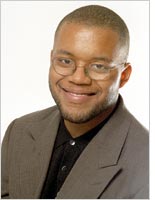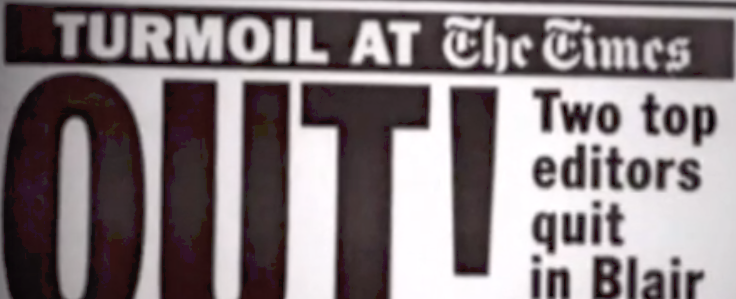Comparing the Jonah Lehrer and Jayson Blair Plagiarism Scandals
 When you think about plagiarism and unethical behavior in journalism over the past 10 years, two names stand out: Jayson Blair and Jonah Lehrer.
When you think about plagiarism and unethical behavior in journalism over the past 10 years, two names stand out: Jayson Blair and Jonah Lehrer.
On the surface, the two scandals had a great deal in common. Both men were heralded as extraordinary journalists who rocketed to fame and stardom in lightning-fast careers that took them to the top of their field. Both, however, were found to have had a long string of plagiarism, falsification and other unethical behavior that brought that career crashing down.
However, where Jayson Blair was in 2003, Jonah Lehrer was in 2012.
As such, the differences between the scandals says a great deal, not just about the men and their infractions, but also about journalism itself.
But to spot those differences, we need to first take a look at the two scandals separately and then look at what makes them so similar before turning around and looking at what separates them.
To start, we’ll begin by looking at Jayson Blair.
The Jayson Blair Scandal
 Jayson Blair started work at the New York Times in 1998 as a summer intern. He was almost immediately accepted by the paper and his internship was extended into 1999, when it was deferred to he could complete some coursework. However, by that November, he was an “intermediate reporter” and writing for the paper regularly.
Jayson Blair started work at the New York Times in 1998 as a summer intern. He was almost immediately accepted by the paper and his internship was extended into 1999, when it was deferred to he could complete some coursework. However, by that November, he was an “intermediate reporter” and writing for the paper regularly.
Blair rose through the ranks quickly at the paper and, by October 2002, was a national reporter for the Times and was the lead on the Beltway Sniper Attacks, which were ongoing at the time.
However, in April 2003 the New York Times was alerted by a reporter, Macarena Hernandez, at the San Antonio Express-News about similarities between a story Blair had written and a previous one by Hernandez. The allegations included details, quotes and other similarities that went beyond mere coincidence.
The allegations led to a lengthy investigation of Blair. In May, Blair resigned from The Times and the newspaper published a lengthy “correcting the record” piece (linked above) that detailed what Blair had done and their investigation into him.
Blair currently works as a life coach and published about the ordeal in 2004.
The Jonah Lehrer Scandal
 The Jonah Lehrer scandal began in June 2012 with allegations that Lehrer, as part of his relatively new writing job at The New Yorker, had reused content and passages from earlier works, including columns he had written for The New York Times, The Wall Street Journal, The Boston Globe and Wired.
The Jonah Lehrer scandal began in June 2012 with allegations that Lehrer, as part of his relatively new writing job at The New Yorker, had reused content and passages from earlier works, including columns he had written for The New York Times, The Wall Street Journal, The Boston Globe and Wired.
Lehrer, who had also just published his third book, was one of the best known journalists and authors in the field of science journalism and, though the self-plagiarism scandal shot to national prominence, it didn’t seem like it would end his career.
The New Yorker stood by its reporter and amended the articles in question with an editor’s note explaining the repetition. There was no suspension or indication he would be let go.
However, shortly thereafter it was learned that Lehrer had fabricated a quote by Bob Dylan and, after that, the hits kept coming. Publications after publication began investigating Lehrer’s work and Lehrer either resigned or was let go from every major post.
The last of which, Wired, published its findings in Slate Magazine in September, disclosing out, out of 18 sample works selected, all but one had at least some ethical issue. Those problems included self-plagiarism, press release plagiarism, traditional plagiarism, fabrication and quotation issues.
Jonah Lehrer is now said to be working on a new book, this one about his ethical infractions, though no release date has been set.
The Similarities
Right off the bat, the two scandals seem to have a very similar arc. Both men were very young, Blair was 27 when his scandal broke and Lehrer was 31, both men had a meteoric rise to the top of the journalism field and both men were brought down by a lone allegations of unethical behavior that, upon investigation, turned out to be a widespread problem with their work.
In both cases, the scandal became national news stories and sparked widespread debate about the nature of ethics in journalism, journalistic responsibility and what it means to be reporter.
In short, Blair and Lehrer had two similar careers with similar endings, down to the tell-all books, but what changed was the world around them and how that world responded to the allegations.
The Differences
Blair and Lehrer, for all of their similarities, practiced journalism in two very different environments. This is best typified by the fact that Blair worked his entire career for The New York Times, from intern to national reporter, while Lehrer was a freelancer, writing for countless publications in a non-exclusive manner.
This had several impacts on the scandals. Blair’s scandal was handled almost completely internally, with a group of editors at The Times combing through Blair’s work meticulously. Meanwhile, Lehrer’s investigation was handled across many different publications, with each taking their own actions against the reporter.
But more than that Lehrer’s investigation was almost completely public. The first accusations against Lehrer were made by a blogger on the Internet and every subsequent discovery, including the posting of Wired’s findings, was done in a public space. Blair, on the other hand, had most of his scandal play out behind closed doors. It began with a confidential phone call and turned into an internal investigation. It was only after it was all concluded that the findings were released.
That being said, Blair also had a much shorter time period for the scandal. He went from the initial report to final analysis in three weeks while Lehrer’s case took the better part of four months, from June into September of 2012.
But more than that there’s also a tremendous difference in the impact that the scandals had on the publications involved. For the New York Times, the Blair scandal was a tremendous blow to their once-prestigious reputation. The Times was so impacted by the scandal that it created the position of the Public Editor, a liaison between the public and the newsroom, a position that become attacked during the recent Margaret Wente controversy.
With the Lehrer scandal, the allegations were spread out across a dozen publications and none were so connected to the reporter that they impacted the publication in any appreciable way. Lehrer, as a freelancer, was more a brand unto himself than affiliated with any publication. As a result, it was Lehrer’s brand that was tarnished and not that of his employers.
Still, though the scandals took different routes and had different collateral damage, for the reporters themselves, they both ended at the same place, the ruination of a once-promising career that forced them both to pivot quickly and exploit their notoriety in other ways.
It’ll be interesting to revisit Lehrer in five years or so and see how his after-scandal arc compares to Blair’s though that analysis will have to wait.
Bottom Line
Journalism has changed a lot in the last ten years. Newspapers are struggling and the way that the two scandals unfolded seem to highlight that. The fact that Lehrer was a freelancer already suggests the issue, that the marketplace wouldn’t support a person like Lehrer being an employee of one or two publications.
The Lehrer scandal took longer to unfold, involved more publications and required more help from the public for all of his misdeeds to be outed. While that’s unnerving, it’s also comforting to know that, even as publications are struggling to maintain their standards and turning more to freelancers to fill pages, the public is there to help keep reporters honest.
In the end, the biggest shift between the two scandals is the role the public played in the case. With Blair, the New York Times was the investigator, judge, jury and executioner. For Lehrer, it was the public that spearheaded all of those roles.
It may not have been as efficient and it may not have been as clean or decisive, but it the approach got the job done and may well set the template for future plagiarism scandals in journalism, politics and elsewhere.
Note: For Jayson Blair’s take on this, read this interview with him on Salon.com.
Want to Reuse or Republish this Content?
If you want to feature this article in your site, classroom or elsewhere, just let us know! We usually grant permission within 24 hours.
